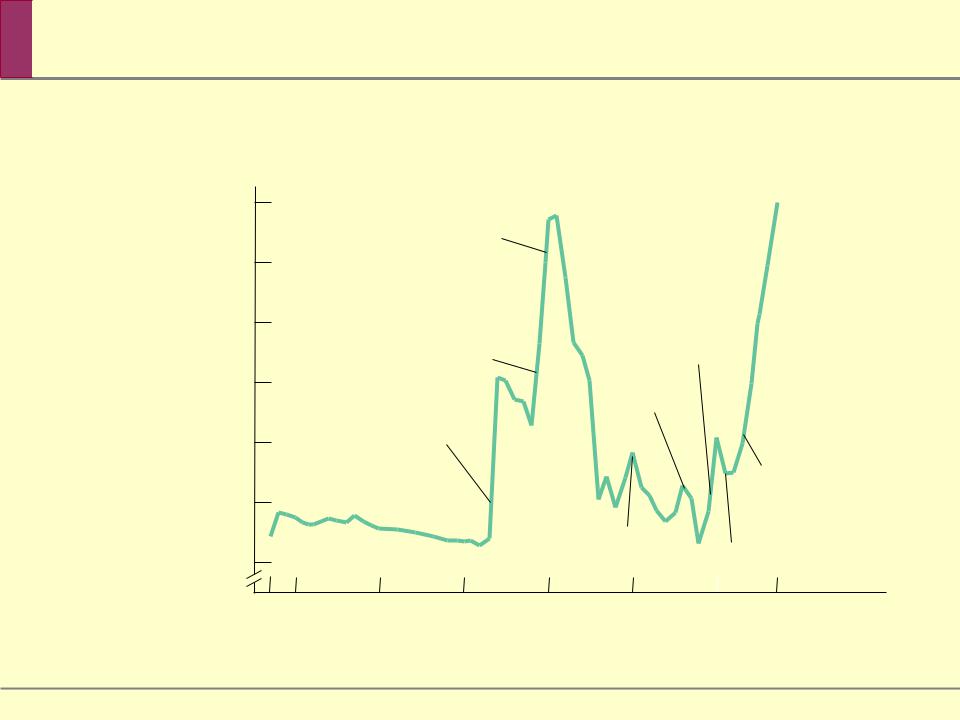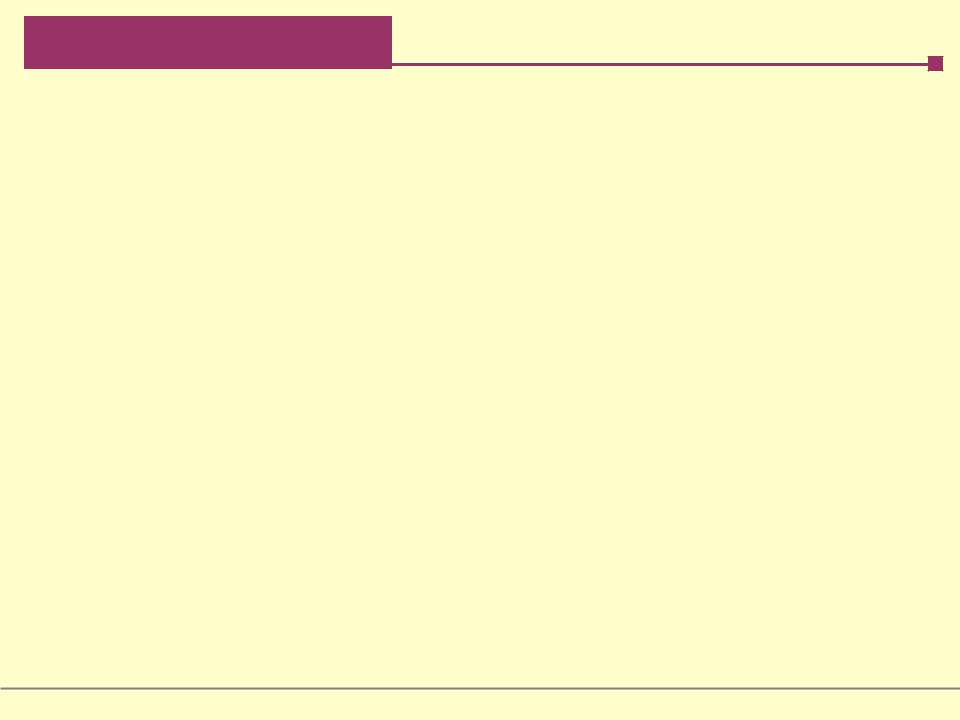
Lectures_micro / Microeconomics_presentation_Chapter_15
.pdf

 The Ups and Downs of the Oil Cartel
The Ups and Downs of the Oil Cartel
Price of crude oil (per barrel)
Crude Oil Prices, 1947-2007
(in constant 2006 dollars)
$70
Iran-Iraq War
60
50
Iranian Revolution
40
Yom Kippur War Arab Oil Embargo
30
20
10
Series of
OPEC output
cuts
OPEC 10% quota increase
|
demandtensio s and |
|
Middle East |
|
tensions |
Gulf |
|
War |
9/11/01 |
Year
19471950 |
1960 |
1970 |
1980 |
1990 |
2000 |
2007 |


 Oligopoly in Practice
Oligopoly in Practice
Oligopolies operate under legal restrictions in the form of antitrust policy. Antitrust policies are efforts undertaken by the government to prevent oligopolistic industries from becoming or behaving like monopolies. But many succeed in achieving tacit collusion.
Tacit collusion is limited by a number of factors, including:
large numbers of firms
complex products and pricing scheme bargaining power of buyers
conflicts of interest among firms


 Product Differentiation and Price Leadership
Product Differentiation and Price Leadership
To limit competition, oligopolists often engage in product differentiation which is an attempt by a firm
to convince buyers that its product is different from the products of other firms in the industry.
When products are differentiated, it is sometimes possible for an industry to achieve tacit collusion
through price leadership.
Oligopolists often avoid competing directly on price, engaging Oligopolistsn noften-priceavoidcompetitioncompetingthroughdirectly on price,
advertengagisinginandnonother-pricemeanscompetitioninsteadthrough. advertising and other means instead.


 Product Differentiation and Price Leadership, cont’d
Product Differentiation and Price Leadership, cont’d
other firms then follow.
coFirmpetes thatonhavepricea oftentacit understandengage in integ nseot to nonprice
competition, using advertising and other means to try to increase their sales.

SUMMARY
1. Many industries are oligopolies: there are only a few sellers. In particular, a duopoly has only two sellers. Oligopolies exist for more or less the same reasons that monopolies exist, but in weaker form. They are characterized by imperfect competition: firms compete but possess market power.
2. Predicting the behavior of oligopolists poses something of a puzzle. The firms in an oligopoly could maximize their combined profits by acting as a cartel, setting output levels for each firm as if they were a single monopolist; to the extent that firms manage to do this, they engage in collusion. But each individual firm has an incentive to produce more than it would in such an arrangement—to engage in noncooperative behavior.

SUMMARY
3. The situation of interdependence, in which each firm’s profit depends noticeably on what other firms do, is the subject of game theory. In the case of a game with two players, the payoff of each player depends both on its own actions and on the actions of the other; this interdependence can be represented as a payoff matrix. Depending on the structure of payoffs in the payoff matrix, a player may have a dominant strategy—an action that is always the best regardless of the other player’s actions.

SUMMARY
4. Duopolists face a particular type of game known as a prisoners’ dilemma; if each acts independently in its own interest, the resulting Nash equilibrium or
Noncooperative equilibrium will be bad for both. However, firms that expect to play a game repeatedly tend to engage in strategic behavior, trying to influence each other’s future actions. A particular strategy that seems to work well in such situations is tit for tat, which often leads to tacit collusion.
5. The kinked demand curve illustrates how an oligopolist that faces unique changes in its marginal cost within a certain range may choose not to adjust its output and price in order to avoid a breakdown in tacit collusion.

SUMMARY
6. In order to limit the ability of oligopolists to collude and act like monopolists, most governments pursue an antitrust policy designed to make collusion more difficult. In practice, however, tacit collusion is widespread.
7. A variety of factors make tacit collusion difficult: large numbers of firms, complex products and pricing, differences in interests, and bargaining power of buyers.
When tacit collusion breaks down, there is a price war. Oligopolists try to avoid price wars in various ways, such as through product differentiation and through price leadership, in which one firm sets prices for the industry. Another is through nonprice competition, like advertising.
